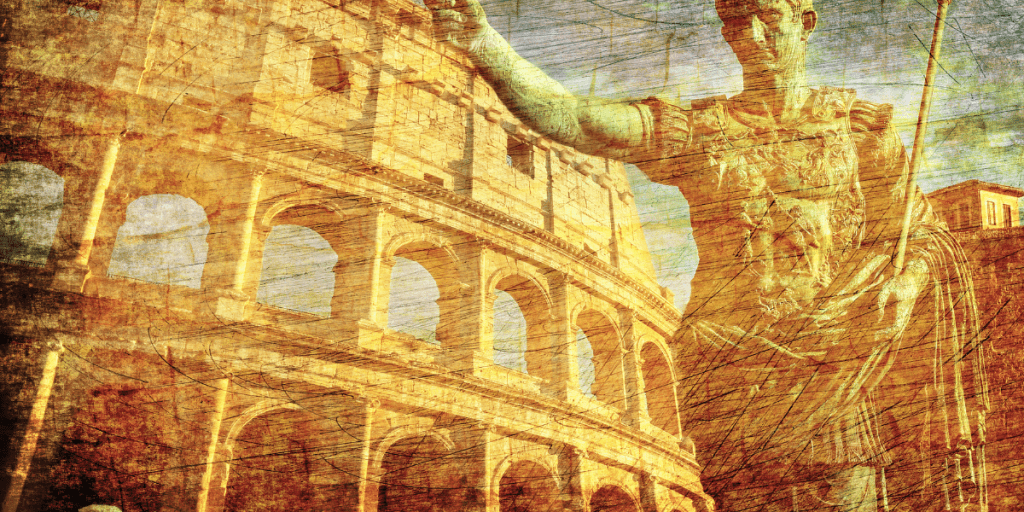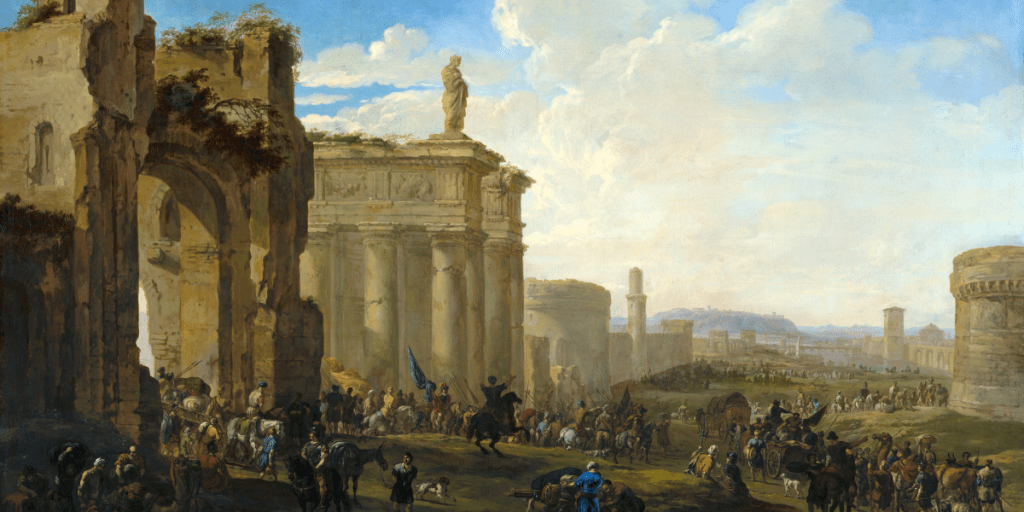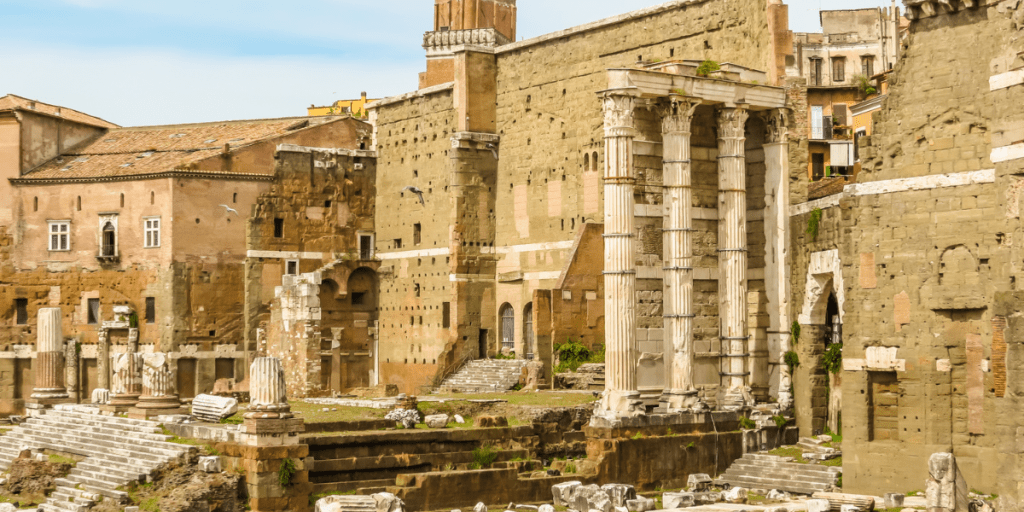20 Crazy Facts About the Roman Empire
The Roman Empire, one of history’s most influential civilizations, is filled with fascinating and sometimes bizarre facts. From architectural marvels to unusual customs, here are 20 crazy facts that highlight the uniqueness of this ancient empire!

1. The Size of the Empire
At its height, the Roman Empire covered about 2.3 million square miles, encompassing territories in Europe, Africa, and Asia. This vast expanse allowed for diverse cultures and languages to coexist under Roman rule. It’s estimated that at its peak, around 70 million people lived within its borders—almost 20% of the world’s population at that time!
2. Roman Concrete
Romans perfected a concrete formula that has proven to be more durable than many modern versions. This ancient concrete included volcanic ash, which allowed structures like the Pantheon to withstand the test of time. Remarkably, some Roman buildings still stand today, showcasing their advanced engineering skills.
3. The Colosseum’s Capacity
The Colosseum, an architectural marvel, could hold up to 80,000 spectators. It hosted not just gladiatorial games but also mock sea battles, animal hunts, and theatrical performances. The engineering behind the Colosseum’s design, including its retractable roof and trapdoors, was revolutionary for its time.

4. Roads that Lasted
The saying “All roads lead to Rome” reflects the extensive network of roads built by the Romans, totaling over 250,000 miles. These roads facilitated trade, military movements, and communication across the empire. Many of these ancient roads are still in use today, a testament to their durability.
5. The Roman Calendar
Julius Caesar introduced the Julian calendar in 46 BC, reforming the Roman calendar to include a leap year. This calendar laid the groundwork for the modern calendar we use today. The introduction of January and February helped standardize timekeeping in a way that had lasting impacts on the Western world.
6. Public Baths
Public baths were an essential part of Roman social life, serving as places for relaxation, exercise, and socializing. These complexes often included libraries, gymnasiums, and snack bars, making them multifunctional spaces. The baths were so important that their construction often reflected the wealth and status of a city.
7. Gladiators’ Diet
Contrary to popular belief, most gladiators followed a primarily vegetarian diet rich in grains and legumes. This diet helped them build strength and stamina for their intense battles. Gladiators also consumed a special drink made from plant ashes, which was believed to help their bones recover after injuries.
8. The Roman Postal Service
The Cursus Publicus was an impressive state-run postal system that enabled rapid communication across the empire. This service used relay stations with fresh horses, allowing messages to travel quickly between distant locations. It played a crucial role in maintaining control over the vast territories of the empire.
9. Emperor Worship
Many Roman emperors were deified after their deaths, meaning they were officially recognized as gods. Temples were constructed in their honor, and rituals were held to worship them. This practice helped solidify the emperor’s authority and foster loyalty among the citizens.

10. Vestal Virgins
Vestal Virgins were priestesses dedicated to the goddess Vesta, tasked with maintaining the sacred fire. They took a vow of chastity for 30 years, and their role was considered vital to the city’s safety and well-being. Violating their vow was punishable by death, highlighting the importance of their duties.
11. Public Executions
Public executions were a gruesome form of entertainment in ancient Rome. These events often included elaborate displays, such as animal hunts and gladiator battles, drawing large crowds. The spectacle served as a means to reinforce the power of the state and deter crime.
12. Roman Fashion
The toga was the quintessential garment of Roman citizens, but it was quite complex to wear and required skill. Only freeborn men could wear togas, and the color and style indicated social status. As a result, dressing well was crucial for maintaining one’s position in society.
13. Urine Tax
Emperor Vespasian imposed a tax on urine collected from public urinals, which was used for various purposes, including tanning leather. This unusual tax highlights the Romans’ pragmatic approach to resource utilization. Vespasian’s saying “Money does not stink” has become famous as a reflection of his attitude toward taxation.
14. The Latin Language
Latin, the language of the Romans, evolved into the Romance languages we know today—Spanish, French, Italian, Portuguese, and Romanian. The widespread use of Latin facilitated communication and administration across the empire. Its influence persists in many modern languages and legal terminology.
15. Animal Symbolism
Animals held significant symbolic meanings in Roman culture. For instance, the owl was associated with wisdom and the eagle represented power. These symbols often appeared in art and literature, reflecting the values and beliefs of Roman society.
16. Innovative Heating
The Romans invented the hypocaust, an early form of central heating that circulated hot air beneath floors and through walls. This technology allowed for comfortable living conditions in colder months, particularly in bathhouses. The hypocaust system demonstrated the Romans’ advanced engineering capabilities.

17. The First Shopping Mall
Trajan’s Market, built around 100-110 AD, is often considered the world’s first shopping mall. It featured multiple levels of shops and offices, offering a variety of goods. This marketplace was a hub of commerce and social interaction in ancient Rome.
18. Chariot Racing
Chariot racing was the most popular sport in ancient Rome, drawing massive crowds to venues like the Circus Maximus. Races were thrilling and dangerous, often resulting in injuries or fatalities for the competitors. Fans were deeply passionate, supporting their favorite teams, much like modern sports enthusiasts.
19. Roman Senators
Initially, only patricians could serve as senators, but over time, wealthy plebeians gained the right to join their ranks. This shift in political structure helped shape the Republic and later the Empire. The Senate played a crucial role in governance, influencing laws and decisions.
20. The End of the Empire
The fall of the Western Roman Empire in 476 AD marked a significant turning point in history, leading to the onset of the Middle Ages. This collapse was due to various factors, including economic troubles, military defeats, and internal strife. The Eastern Roman Empire, or Byzantine Empire, continued for nearly a thousand more years.
These facts reveal just how remarkable and multifaceted the Roman Empire was, illustrating its profound impact on history and culture. Each point offers a glimpse into the lives of the Romans and their enduring legacy.
